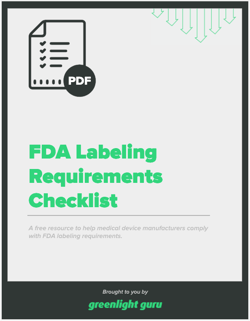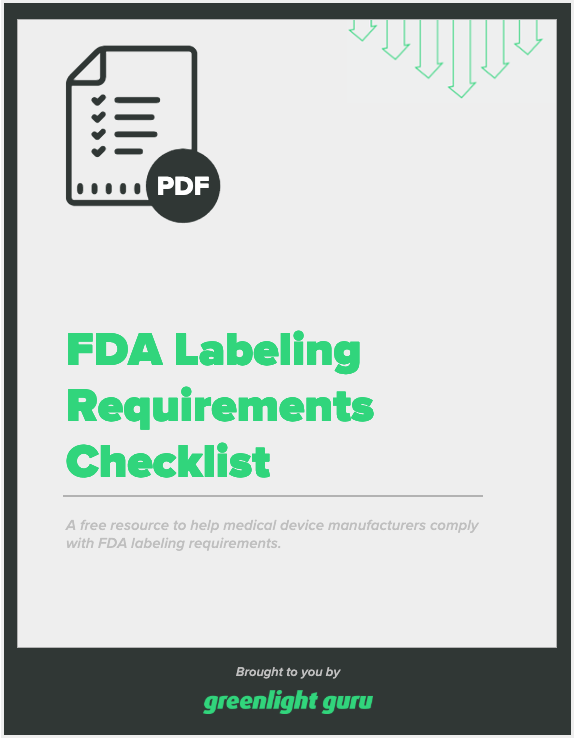Get your free PDF
FDA Labeling Requirements Checklist

Medical device labeling is the essential information provided by manufacturers about a device's purpose, usage, risks, and maintenance. This labeling ensures safe and effective use, assisting healthcare professionals and patients while meeting regulatory compliance.
FDA Guidelines For Labeling Medical Devices
The specific requirements for labeling your medical device will depend on what type of device your company manufactures. In 21 CFR Part 801, the FDA publishes detailed regulations that govern the labeling of medical devices for sale in the United States. In addition to the general labeling provisions that apply to all devices, there are special sub-parts that apply to devices with unique device identification and over-the-counter devices, as well as detailed exemptions and special requirements for specific types of devices.
Medical device companies should determine the risk classification and intended use for their devices before developing detailed labeling requirements. All medical device labels are to include the name and address of the manufacturer, packer, or distributor, along with adequate directions for use.
FDA QSR Requirements For Labeling Medical Devices
If your medical device company is planning to sell devices in the United States, you will need to comply with the FDA QSR (Quality System Regulation) for Labeling and Packaging Control of medical devices, found in 21 CFR Part 820.120. The focus of these controls is to ensure that labels are accurately designed and properly applied to the correct products.
The section requires that medical device companies establish and maintain a procedure to control labeling activities. It also mandates five different types of controls for device labeling:
- Label Integrity - Medical device companies must print and apply labels that will remain legible and affixed to their products throughout the normal process of storage, handling, distribution, and appropriate use of the product. There is no purpose in having a compliant label that falls off easily during storage or shipping.
- Labeling Inspection - The label for the device must be examined for accuracy before it can be used to label the product. The examination should ensure that the label has the correct unique device identifier (UDI) code, expiration date, control number, storage and handling instructions, indications of use, and any additional important information. Documentation of this review process, including the date and approval signature, should be documented in the device history record (DHR).
- Labeling Storage - Medical device manufacturers must design their labeling storage system in a way that properly identifies labels and prevents mix-ups between labels. Adequate labeling storage controls prevent labels from being erroneously misapplied to the incorrect product.
- Labeling Operations - Manufacturers must control the labeling process to prevent mix-ups and ensure labels are applied to the correct device. The device history record should be updated with the label and labeling used for each production unit, lot or batch of product.
- Control Number - Medical devices that meet the traceability requirements of 21 CFR Part 820.65 must be accompanied by a control number from manufacturing through distribution.
Medical Device Companies Use Greenlight Guru To Manage Labels and DHR
Greenlight Guru offers a medical device-specific eQMS software platform that provides companies with the convenience and ease of managing their device labels from directly within the software. Our solution provides users with the functionality to upload, route, and approve their labels, just as they would any other document.
Greenlight Guru allows medical device companies to generate a device history record that includes the results of the labeling inspection, updated labeling information for new lots or batches of products, and the required SOPs for medical device labeling. This feature makes it easier than ever for medical device manufacturers to demonstrate compliance with the FDA's requirements for labeling medical devices.
FREE DOWNLOAD: Click here to download your PDF copy of our FDA Labeling Requirements Checklist.
Related Links
Looking for an all-in-one QMS solution to advance the success of your in-market devices and integrates your quality processes with product development efforts? Click here to take a quick tour of Greenlight Guru's medical device QMS software →










